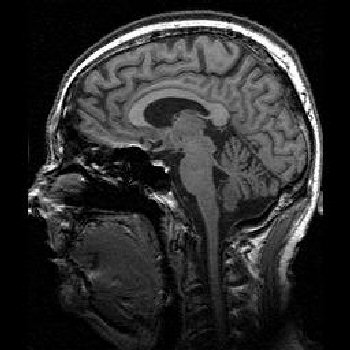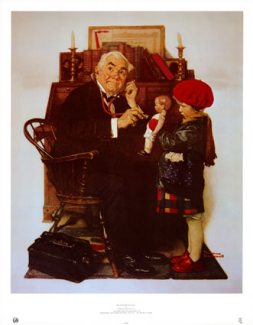1. Comparing US Health Care To Other Developed Countries: Those pushing for government-run health care are fond of comparing the US unfavorably to other developed countries with heavier government-run or directed systems. Actually, the US is more successful on comparative costs, efficiency of resource use, and outcome.
Typical of misleading statistics, a US advocate of government-run health care touts a report from the Organization for Economic Cooperation and Development (OECD), comprised of the 30 most developed economies, favoring universal coverage as exists in most of the other OECD countries. The OECD report is actually titled a “working paper” by the three researchers. The encyclopedia defines a “working paper” as “a document created as a basis for discussion rather than as an authoritative text.” This OECD “working paper’s” statistics are misleading.
More accurately, a January 2009 analysis of the data gathered from the OECD points at life expectancy as the single best measure of outcomes. Excluding deaths by injury, to focus on health related outcome, “the US does the best of all the OECD countries” having the longest life expectancy.
Even the OECD “working paper” has to admit that the US’ higher infant mortality rate is misleading: “Even if there were uniform reporting standards of infant mortality across countries, a second limitation to using it as an indicator for health outcomes is the potential effect of certain interventions on the likelihood of a live birth. It is conceivable that additional health care provided in the second or third trimester causes a pregnancy that would almost assuredly be a stillborn to become a pregnancy with an improved chance of a live birth but also an above-average likelihood of dying within the first year. These interventions increase health care expenditures and result in the birth of more low-weight- and very low-weight babies, with significantly greater health problems.” The “working paper” does not address the moral issues or that most such babies go on to productive lives: “43% of children had survived without any impairment. Minor impairment was diagnosed in 39% and major impairment in 18% of assessed children.”
This OECD analysis also corrects per capita health spending to use price parity (comparative purchasing power) instead of oscillating currency exchange rates. The decline of the dollar compared to the Euro in the past decade did not increase the US’ comparative costs per person by 55%. In fact, other OECD countries’ health spending is understated by 56%, and “the US is no longer the highest [spending] country. France and Norway exceed the US in real health care consumption.” Still, other OECD countries’ spending on health care is lower than in the US.
The OECD analysis accounts for this, “because many health care systems use price controls to some extent….that systematically understate the economic cost of the health care system. The first is the hidden cost of nonprice rationing, while the second is the hidden cost of informal, black market co-payments.” Long waits, reduced access to advanced drugs and treatments, shifting development costs on to US consumers, traveling abroad for care, untracked side payments to providers are among the hidden costs.
The “working paper” admits that high US tort rewards drive up US health care costs via defensive medicine. “[P]rofessional liability reforms do indeed reduce the practice of defensive medicine.” Defensive medicine increases US health care costs by about 10%. Lawyers lead all groups in political contributions. In 2000, 86% of contributions from tort lawyers went to Democrats, one periodical calling them the “Cash Bar” for Democrats.”
In 2008 the percentage was 95%. ObamaCare proposals do not include tort reforms. Another health care result: malpractice premiums are two to three times higher for gynecologists delivering babies, leading many to cease, and the resulting medical care is lessened.
Finally, the OECD analysis measures the personnel inputs to health care, finding “it is clear that the US health care system is not a particularly high user of health care resources….the US resource use is 6th of 12, slightly below the mean.” The higher pay for doctors and nurses in the US “creates a large bias towards inaccurately portraying the US system as inefficient in producing health with health care resources,” and further ignores the US attracting its own and the best providers from other countries to benefit US health care.
 2. US Health Care Spending Is More Than We Can Afford: As it has become more evidenced that the US does not compare unfavorably, the push for heavier government involvement has shifted toward saying we can’t afford the current and future costs. The affordability claim is exaggerated. We can afford more than previously, have chosen to, and benefited.
2. US Health Care Spending Is More Than We Can Afford: As it has become more evidenced that the US does not compare unfavorably, the push for heavier government involvement has shifted toward saying we can’t afford the current and future costs. The affordability claim is exaggerated. We can afford more than previously, have chosen to, and benefited.
Our ability has greatly increased to pay for and enjoy a higher standard of living, allowing a shift in priorities. From 1901 to 2003, the percentage of personal expenditures on the necessities of food, clothing and housing declined by half from 79.8% to 50.1%, while the quality and amount has increased. Home ownership increased from 19.1% to 67%. Other personal discretionary spending was able to increase from 20.2% to 49.9%, including all the modern conveniences and pleasures. Voluntary sharing of the bounty has also increased as the percent given to charities has doubled. Personal spending for health care increased from about 2% to almost 5%. Although some may be pressed to spend on health care, the overwhelming majority can and do.
The US’s per person Gross Domestic Product (GDP) is 5.4 times larger in 2008 than 1929 and disposable personal income 6.7 times larger, in inflation adjusted dollars, according to the US Commerce Department’s Bureau of Economic Analysis. The share of GDP spent on personal consumption has decreased from 74.7% to 70.5% during that time. Defense spending went from 9/10ths of a percent of GDP in 1929 to over 40% during World War II, in the teens during the 1950”s declining to about 6.6% by the end of the Cold War, further dropping to 3.8% prior to 9/11/2001 and rising to 5.2% in 2008. Nondefense federal and state and local spending has near doubled from 8.2% in 1929 to 12.7% of GDP in 1966’ Great Society expansion to an even larger 15.1% in 2008 and climbing rapidly under the Obama administration.
The Share of GDP spent on health care, per the US Department of Health and Human Services, has nearly tripled from 5.2% in 1960 to 16.2% of GDP in 2007. The primary cost driver is new technologies. The government share of that has almost doubled to 46.2% from 24.7%. By 2018, it is projected to rise to 20.3%.
This primarily reflects the increased spending by government on added coverage for more, and the vast improvements enjoyed by all from new drugs, technologies and treatments delivering significantly better prevention, relief and cures. The main competitor for this spending is the further large expansion of other social programs favored by liberals. Inflation-adjusted government spending has increased by a multiple of 58 times since 1929, by over 5-fold since 1946, and is sharply escalating now.
3. Reform Overhaul Will Yield Major Savings: Price Waterhouse analyzed the primary cost drivers in health care. Leading the pack are new technologies, public demand for broader coverage and access, and defensive medicine. ObamaCare is not proposing restraints on lawsuits, tort lawyers being a major constituency. Health care consumers’ demands for fast access to the latest and best is not contradicted.
The Lewin Group is the leading consultants to government and private groups on health plan costs. Lewin says the two closest Congressional proposals to Obama’s stated design, from Senator Baucus and from Senators Wyden and Bennett, would increase National Health Expenditures, while dramatically increasing employer costs. It is reported that Senator Baucus is expected to be the “architect” of the emerging detailed plan, and the Wyden-Bennett proposal enjoys major support, the Obama administration saying it will hand off detailing to Congress.
Senator Baucus, reported to be the main “architect” of the emerging detailed ObamaCare, is already pressuring the Congressional Budget Office to be “creative,” otherwise known as cooking the books.
 4. Increased Evidence-Based Medicine And Health Information Technology Will Significantly Improve Care and Reduce Costs: ObamaCare proposes major increases in the use of evidence-based medicine. There is a strong case for increased analyses of the effectiveness of alternative treatments to have more evidence-based (also called performance-based or comparative-effectiveness) medicine. The above Price Waterhouse report cites a study that estimates as much as 30% of health care spending is excessive due to overuse, misuse and waste. It cites another study that defensive medicine increases health care spending by 10%. However, if major benefits are to emerge, they will be very expensive to find, seriously troubling and possibly dangerous to administer, and a long time coming. We should move very carefully and not faddishly rush pell-mell into this sphere.
4. Increased Evidence-Based Medicine And Health Information Technology Will Significantly Improve Care and Reduce Costs: ObamaCare proposes major increases in the use of evidence-based medicine. There is a strong case for increased analyses of the effectiveness of alternative treatments to have more evidence-based (also called performance-based or comparative-effectiveness) medicine. The above Price Waterhouse report cites a study that estimates as much as 30% of health care spending is excessive due to overuse, misuse and waste. It cites another study that defensive medicine increases health care spending by 10%. However, if major benefits are to emerge, they will be very expensive to find, seriously troubling and possibly dangerous to administer, and a long time coming. We should move very carefully and not faddishly rush pell-mell into this sphere.
At the American Legislative Exchange Council of about 2000 legislative members in all 50 states and 80 in Congress, a lengthy analysis raises many caveats about evidence-based medicine. Not only will it not guard against frivolous lawsuits, laudable sounding evidence-based medicine is scientifically and statistically ill-defined and ill-definable when it comes to actual clinical practice and individual variations in needs and efficacies. Also, the “integrity of medical decisionmaking” is not protected, leading to “cookbook” medicine. Further, for a variety of largely irremovable reasons, “[i]n fact, ‘evidence-based’ research results can strongly contradict each other.” Lastly, there is very little such “gold standard” analyses available due their huge cost and time consumption.
In a February 2009 New York Times article by a leading specialist, who supports increased evidence-based medicine, she “began searching for clinical trials on pay-for-performance plans” finding “most disturbingly, very few high quality studies on efficacy. Looking for a few good studies, it turned out, was like searching for a needle in a massive haystack of social experimentation.”
Further, with good reason, there is considerable expectation that such evidence-based medicine, with all its weaknesses, is intended or will inevitably lead to rationing that may be as harmful to many’s health as it is beneficial to costs.
President Obama chose his Chief of Staff’s brother, Dr. Zeke Emanuel, to be counselor on health care costs and coverage to Obama’s budget director. In his former position at the National Institutes of Health, Dr. Emanuel told the Bloomberg interviewer he “focused on the ethics of conducting research and clinical trials as well as allocating medical resources – de facto rationing, he said.”
Dr. Robert Wachter, professor and Associate Chair of the UCSF’s Department of Medicine, Chief of Hospital Medicine at UCSF Medical Center, widely published peer reviewed author on quality, safety and health policy, wonders if “we are mature enough to make use of comparative effectiveness research?” He says, “I worry that we’re not.” He is critical of our excessive spending. But, his wide experience tells him, there’s “cautionary tales” from Britain’s efforts (typically in governmentese, acronymed NICE -- National Institute for Health and Clinical Excellence).
To me, NICE’s experience shows that rationing based on cost-effectiveness can be done, but we can count on it being about ten times harder in the United States (with our fragmented healthcare system, our sensationalist media, our hypertrophied legal system, and our tradition of individual benefit trumping the Good of the Commons) than it has been in the UK.
Dr. Wachter concludes with sheer hope, “But let’s not be naïve about it – one person’s ‘cost-ineffective’ procedure may be a provider’s mortgage payment, a manufacturer’s stock-levitator, and a patient’s last hope for survival.”
Without repeating the litanies of individual stories of critical health care denied in Britain, or elsewhere, by rationing, one need only recall Americans’ retreat from the far more lenient restrictions in our HMOs to be skeptical of the prospects for or outcomes from increased restrictions.
A close companion of evidence-based medicine is health information technology (HIT) to collect and carry individual’s records and tell providers the practices recommended or imposed. The promise is to reduce medical errors and costs. That promise seems remote.
The Obama ‘stimulus” bill included $20 billion to develop a national HIT system, with tens of billions more to be invested. In Britain, with a small fraction of our health care providers and facilities in a far less diverse health care system than ours, they’ve already spent over $18 billion, and it doesn’t work. It would not be unrealistic to expect US costs to well exceed $100 billion to reach a possible prototype.
There are advantages to a fully developed, interactive HIT. However, most medical providers will not reap rewards anywhere commensurate with the very high costs, requiring either far more government spending or imposed costs on providers driving up their expenses and charges. A few tightly controlled institutions, like Mayo and Kaiser, have expended great resources in developing highly customized HIT for themselves, but their utility or applicability to others is very limited. One of the key disadvantages of a national HIT is the increased ease with which rationing practice regimens can be imposed upon individual health care.
 5. Present Administrative Costs And Insurer Profits Are Too High: The above Price Waterhouse analysis finds 86% of premiums being paid out for claims and an additional 5% for consumer services like prevention, wellness, care coordination, education, and information systems. Government compliance and reporting requirements cost another 6%. That leaves 3% for profits and reserves needed to generate added investments. Indeed, in 2008, Fortune Magazine’s compilation of industry profitability had health care insurance and managed care well behind some commonly assumed to have low profits such as railroads (12.4%). Discretionary entertainment (12.4%) is more profitable than necessary health insurance.
5. Present Administrative Costs And Insurer Profits Are Too High: The above Price Waterhouse analysis finds 86% of premiums being paid out for claims and an additional 5% for consumer services like prevention, wellness, care coordination, education, and information systems. Government compliance and reporting requirements cost another 6%. That leaves 3% for profits and reserves needed to generate added investments. Indeed, in 2008, Fortune Magazine’s compilation of industry profitability had health care insurance and managed care well behind some commonly assumed to have low profits such as railroads (12.4%). Discretionary entertainment (12.4%) is more profitable than necessary health insurance.
6. US Consumer Dissatisfaction Requires Drastic Health Care Changes: There are numerous polls with many Americans expressing dissatisfaction with the US health care system, usually asking general questions like “would you like to see major improvements.” However, more careful polling reveals quite the opposite in reality. For example, Gallup’s annual polls are summarized by Gallup thusly:
Gallup's annual Healthcare survey, conducted Nov. 11-14, [2007] finds 57% of Americans saying they are satisfied with the total cost they pay for their healthcare, while 39% are dissatisfied. These percentages have been quite stable in recent years…Americans are quite happy with their health plans. Eighty-three percent of Americans rate the quality of healthcare they receive as excellent or good, while only 15% say theirs is poor. Slightly less, 70%, say their healthcare coverage is excellent or good.
These ratings have been fairly stable in the seven years in which Gallup's Healthcare survey has been conducted. Similarly, votes on drastic overhauls have consistently lost. There is no public mandate for drastic health care changes.
7. Health Care Costs Are So High They Are A Major Cause Of Personal Bankruptcy: President Obama publicly claimed last week that “The cost of health care now causes a bankruptcy in America every thirty seconds." ABC News Director of Polling examined that claim and found it “simply unsupportable.” Examination of the basis for Obama’s claim and of other studies found the numbers vastly overstated.
The suspect Harvard research professor from whom Obama drew his claim cofounded an advocacy group to push for government-run, single-payer health care. Another professor with concerns for the impact of high medical costs on the uninsured says, “It stinks to be uninsured. I don’t want to be quoted saying anything else. But there are correct studies, and incorrect studies. For academics, the validity of the research methods matters.” It should for Presidents as well.
8. The Number Of Uninsured Is So Large That Drastic Health Care Changes Are Necessary: That about 16% in the US are uninsured is repeated as cause for universal coverage schemes to cover them that at the same time grossly changes the health care system and costs affecting the other 84%. Even if the other 84% were not negatively affected, the uninsured count is actually an overblown statistic.
The definition of uninsured includes all those lacking coverage any time in a year. Those lacking coverage for more than a year is 11%. The long term uninsured is primarily among working-age adults with low education.
The Kaiser Foundation offers a recent analysis of the uninsured. 19% can afford coverage but don’t purchase it. 25% are eligible for current programs but don’t enroll. That leaves 56% for whom affordability is considered too difficult, needing assistance. About 5 million, over 10%, of the uninsured are illegal immigrants, who tend to have low educations. About 19% of those needing assistance are illegal immigrants.
In short, less than half of those bemoaned as uninsured are legal residents in need of additional financial help. 16% becomes less than 8%. The negative impact of low-skilled illegal immigrants is most directly felt among low-skilled Americans, as a National Bureau of Economic Research analysis shows, low-wage competitors illegally in the US adding to low-wage/low-educated citizens’ difficulty in affording insurance.
Two related issues need addressing in updating the uninsured statistic. The large expansion of the federal SCHIP program just enacted will expand government coverage to more people and at higher incomes. Analysis shows that while reducing the number of uninsured, as many as 50% of those newly enrolled will be substituting previously affordable private insurance for low to no cost government coverage. Their taxpayer cost is larger than the entire present SCHIP program’s.
Another related issue is that some of the uninsured can afford coverage but are rejected for coverage or are priced out due to health conditions. The National Conference of State Legislatures offers useful information about these high risk, high care cost uninsureds. Over 200,000 are enrolled in state high risk pools, but there aren’t good numbers on how many more there are, which is surely much higher. The association of health insurers reports that about 11% of those applying for individual private insurance – by which there are about 25 million covered -- are rejected. About 11% of those offered policies is at above-standard premium rates. The insurers propose to cap surcharges at 50%. That may help some. For others, the 35 state high risk pools are frequently underfunded and have limited benefits. Some will be helped by the SCHIP expansion, but much more funding for high risk pools is needed. I guesstimate the annual cost at $12 billion (Double the average individual premium/cost of health care to $500/month and multiply by 2 million people.) Imposing this cost on private health plans through guaranteed enrollment will price others out of affordable coverage. It will also attract those who delay coverage until needing it, which imposes their costs on others and prices more out of coverage. Properly funding high risk pools will limit this coverage to those who more genuinely need it and not have the extra costs created by guaranteed enrollment for private plans.
 9. More Preventive Care Will Better Serve Consumers And Save Costs: The February 2008 New England Journal of Medicine contains a review of 599 peer-reviewed articles between 2000-2005. The conclusion: “Studies have concluded that preventing illness can in some cases save money [and health] but in other cases can add to health care costs….[and] also sidesteps the question of whether such measures are generally more promising and efficient than the treatment of existing conditions.” The effectiveness of wellness programs is difficult to measure but are less costly than extensive additional testing of the population for rarely occurring illnesses. More early diagnosis uncovers some treatable illnesses but leads to more avoidable interventions, side effects, discomfort, and overuse of resources. Further, extended life health care costs are estimated to cost more, particularly for the aged.
9. More Preventive Care Will Better Serve Consumers And Save Costs: The February 2008 New England Journal of Medicine contains a review of 599 peer-reviewed articles between 2000-2005. The conclusion: “Studies have concluded that preventing illness can in some cases save money [and health] but in other cases can add to health care costs….[and] also sidesteps the question of whether such measures are generally more promising and efficient than the treatment of existing conditions.” The effectiveness of wellness programs is difficult to measure but are less costly than extensive additional testing of the population for rarely occurring illnesses. More early diagnosis uncovers some treatable illnesses but leads to more avoidable interventions, side effects, discomfort, and overuse of resources. Further, extended life health care costs are estimated to cost more, particularly for the aged.
Ironically, but consistent with a one-size-fits-all approach to health care, the Obama administration is eliminating subsidies to Medicare Advantage plans from private providers. Medicare Advantage plans offer additional benefits, care management and coordination. About 20% of Medicare enrollees have chosen Medicare Advantage plans, 57% of whom have incomes between $10-$30 thousand, 35% more of whom are minorities, and poorly provided rural area residents enrollment has increased over four-fold. A third as many Medicare Advantage members report delaying care due to costs as among traditional Medicare members. Aside from added benefits, Medicare Advantage members have lower out-of-pocket costs. The Congressional Budget Office estimates a savings of $157 billion over the next 10 years by eliminating this subsidy. Given the imminent financial collapse of Medicare, this economizing may be necessary, but given some of the other spending in Obama’s budget that may be seen as lower priority this subsidy may not be seen as high a priority to save from. Interestingly, AARP generally supports ObamaCare but its members benefit from and AARP profits from selling Medicare Advantage plans, so AARP is not in favor of this trimming.
10. Health Care Consumers Are Being Served By Drastic Health Care Changes: News reports of Obama administration health care parleys say that consumers are at the table. In fact, there are various interest groups each protecting the interests and costs of their members, usually at odds with each other. The interest groups’ before and behind curtain maneuvering is intense and complex, and much of what they’re telling the public misleading of intent or outcomes. Not nefarious in a free country, but each is angling to profit and enlarge from a bigger pie of spending. The only reliable measure of consumer preference is in general polling which, as shown above (point 6), has consumers not dissatisfied with their present arrangements.


 1. Comparing US Health Care To Other Developed Countries
1. Comparing US Health Care To Other Developed Countries 2. US Health Care Spending Is More Than We Can Afford:
2. US Health Care Spending Is More Than We Can Afford: 4. Increased Evidence-Based Medicine And Health Information Technology Will Significantly Improve Care and Reduce Costs:
4. Increased Evidence-Based Medicine And Health Information Technology Will Significantly Improve Care and Reduce Costs:
 9. More Preventive Care Will Better Serve Consumers And Save Costs:
9. More Preventive Care Will Better Serve Consumers And Save Costs:
As Bruce Kesler over at Maggie's Farm points out, ObamaCare is aimed at dramatically changing one-sixth of the US economy in ways that are untested or tested and found wanting, primarily involving huge increases in government direction of health care: The details of ObamaCare are largely being left to Congress, the same body that stuffs the federal budget with earmarks, waste, and other programs that are not requested. ObamaCare is premised on claims for drastic changes in health care and major increases in government programs being necessary. Those claims are largely specious.According to Bruce, the top ten specious premises for ObamaCare are:1. Comparing US Health Care To Other Developed Countries 2. US Health Care Spending Is More Than We Can Afford 3. Reform Overhaul Will...
Tracked: Mar 11, 10:43
At Maggie's Farm, Bruce Kesler presents a detailed examination of the top ten reasons given why we need nationalized healthcare NOW. Those reasons are... Comparing US Health Care To Other Developed Countries US Health Care Spending Is More Than We...
Tracked: Mar 11, 12:17
If you have not yet seen Bruce Kesler's guest post at Maggie's Farm discussing Healthcare Reform, please do so. Here is a small taste: Top Ten Reasons For ObamaCare Are Based On False Information George Bernard Shaw warned “Beware of...
Tracked: Mar 11, 20:59
A wave of a fine cigar to all of the sites that linked with Bruce Kesler's excellent and well-researched post on ObamaCare here. Light one up for the cause of freedom and choice in medical treatment, with our thanks. We do want
Tracked: Mar 12, 10:10
A major question is, what are the effects of the Virginia federal district court ruling that the individual mandate within ObamaCare (officially titled PPACA) is unconstitutional? For now, and even if the Virginia ruling is eventually sustained by the US
Tracked: Dec 13, 19:44